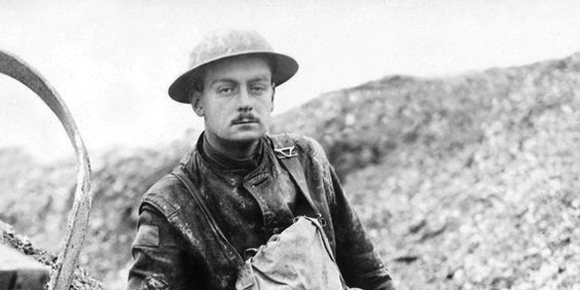by Bruce Cherney (part 1)
The dog came home. That in itself wasn’t extraordinary, as dogs are anxious to return to the comfort of a warm house after doing their business outside during the winter. But what was unusual was that the dog returned home without its owner, Christopher “Chris” O’Kelly, a Victoria Cross (VC) recipient during the First World War. The dog was supposed to still be in the company of O’Kelly, who had set out months earlier from Winnipeg with E.L. Murray on October 2, 1922, to prospect in the Lac Seul region of Northwest Ontario, some 450 kilometres away. The 241-kilometre-long, crescent-shaped lake is about 40 kilometres northwest of Sioux Lookout, Ontario.
Once the dog returned to Winnipeg alone at Christmas time after making its way through heavily forested, as well as muskeg, swamp, river and lake filled terrain — seemingly an impossible solitary trek for a four-legged animal used to human companionship — the parents of the 26-year-old man, Cecilia and Christopher O’Kelly, became understandably concerned and anxiously wondered what had happened to their son.
“Miners and trappers from the north country have brought word to Winnipeg that Capt. O’Kelly is lost somewhere in the wilderness north of Hudson,” reported the January 17, 1923, Winnipeg Tribune.
“He and a companion named Murray set out from the last Hudson’s Bay (Company) post (Hudson on the shore of Lost Lake, the gateway to Lac Seul) on Nov. 6 and were expected to return to that post in two weeks for supplies.
“Mr. O’Kelly, senior, has sent north Hubert Tyrell, of Winnipeg, with a dog team, also a driver (Martin Johnson) from Gimli, to search for the missing man.”
According to the newspaper: “Soon after Capt. O’Kelly and Murray left the Hudson’s Bay (Company) outpost the cold weather set in. It is feared that they have been snowbound. As Murray is a veteran woodsman, it is believed that they are likely to have made some shift (in their location) and they will be found.”
After several weeks, the search party returned to Winnipeg.
“The searchers skirted the shores of the lake and questioned the Indians, but were unable to find any tidings of the men for whom they were searching,” reported the February 1, 1923, Tribune.
“Hope is still entertained that the men may turn up, as the region is so vast that the searchers might have missed their whereabouts.”
But O’Kelly’s parents soon had reason to fear the worst.
A letter was received in Winnipeg from W.B. Murray, the HBC factor at Hudson, Ontario, giving details about the finding of the body of Murray by John Ross, a local aboriginal man.
“The body of Murray, when found face downward in a little sand bay on Goose Island, was wrapped in an eiderdown sleeping robe, rolled to form a lifebelt (Tribune, May 28). A mile away, on the shore of the island, were found the canoe and engine (outboard motor) of the prospectors with the knapsack belonging to O’Kelly. It is believed in Hudson that the two men met their fate together and were carried apart by the waters of the lake.”
Ross had finished up his trapping season and was on his way to the HBC post at Pine Ridge. Due to ice on the lake, he was forced to closely follow the shoreline “and it was in a little cove that he came on the body of a white man ...
“Hurrying to the post he told the manager, Robert Young, who, with his son, set off at once to the spot taking enough lumber to make a coffin. They placed the body in the rude casket and buried it just deep enough to preserve it.”
The senior O’Kelly had identified the body as Murray’s after travelling to Northwestern Ontario in the hope that it may be his son’s remains.
J.D. MacKenzie at Fort William received word of the body’s discovery and wired back to give police access to the HBC’s gasoline launch to provide fuel for further searches in the vicinity and recover Murray’s body.
“The police on their arrival found everything prepared and were able to get underway at once but ice conditions on the upper part of the lake (Lac Seul) held them up and the trip took four days instead of two. On arrival at the hasty grave they loaded the body on one of the many’s York boats, which carried it to Hudson, where Constable Gago of the (Ontario) provincial police (OPP), had all the papers necessary to permit shipment to Winnipeg.”
A this point, the search had turned in a quest to recover O’Kelly’s body, as all hope had virtually ended that he would be found alive.
A search party headed by Corporal Hall of the Royal Canadian Mounted Police (RCMP) wired Winnipeg on June 26 that their efforts to find O’Kelly’s body were unsuccessful. The theory was that the body had sunk to the bottom of Lac Seul and would be impossible to locate.
As a war hero and an extremely popular man in Winnipeg, all efforts had been made to discover O’Kelly’s whereabouts, but it was increasingly becoming clear that further searches would be futile.
Without a body being found — to this day, his remains have never been discovered — it was determined that O’Kelly had drowned on or about November 15, 1922.
(Next week: part 2)



